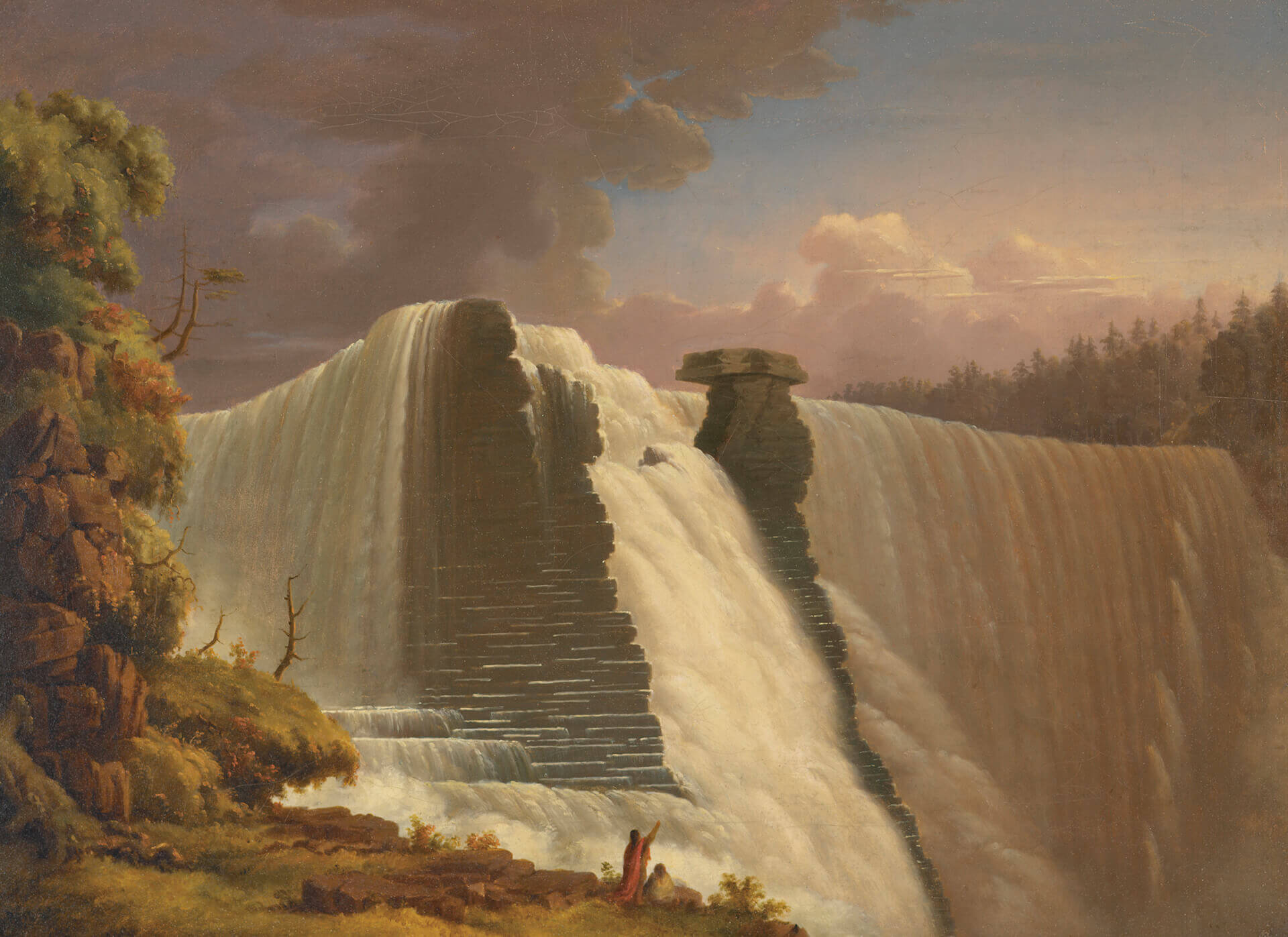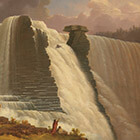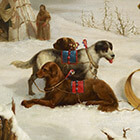The Cackabakah Falls c. 1849–56

Paul Kane, The Cackabakah Falls, c. 1849–56
Oil on canvas, 51 x 71 cm
Royal Ontario Museum, Toronto
The Cackabakah Falls is a superb example of Kane’s embrace of the sublime. In portraying Kakabeka Falls, the artist has chosen as his subject one of the natural wonders along the Hudson’s Bay Company (HBC) voyageur route. His depiction of these falls as a fearsome force of nature is intended to inspire and overwhelm the viewer, while the foreground wedge of land offers a stable view at a safe distance.

Kane was but a passenger when travelling with the HBC brigades, and while the men portaged, he would sketch. In executing his earlier drawing of this particular view, Kakabeka Falls, 1846, Kane appears to have been aided by an optical instrument. The precise articulation of outline and details of the “tower” in the middle, and the heavier pencil tracing the foliage and rocks in the foreground, suggest Kane used a device called a camera lucida.
In translating his linear rendition into an oil painting, Kane created a spectacular vision of the sublime. Light glances off the massive sheets of falling water, reflects off the horizontal striations of the chert rock, and vies with the storm cloud for supremacy. The diminutive Aboriginal figures on the riverbank are a typical Romantic device used to provide scale and emphasize the immensity of this natural wonder—and, by projection, Kane’s own experience.
Kane makes no mention of the falls by name in his field journal, nor does he indicate his response to the view; he simply notes that he made sketches of two portages along this leg of his journey. It is as though Kane relies on his drawing to accurately record his experience and his painting to emotionally express it.

 About the Author
About the Author
 More Online Art Books
More Online Art Books
 Acknowledgements
Acknowledgements